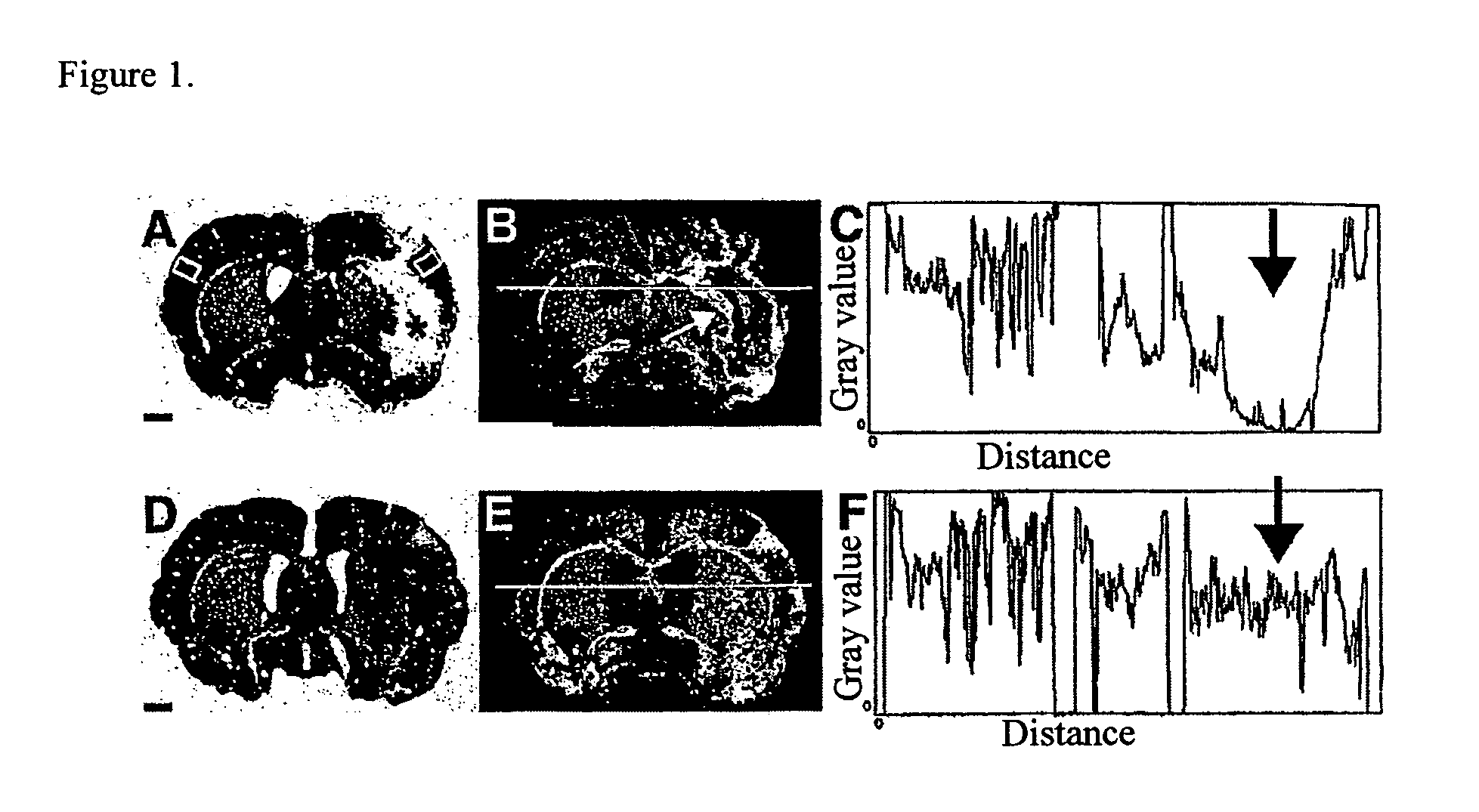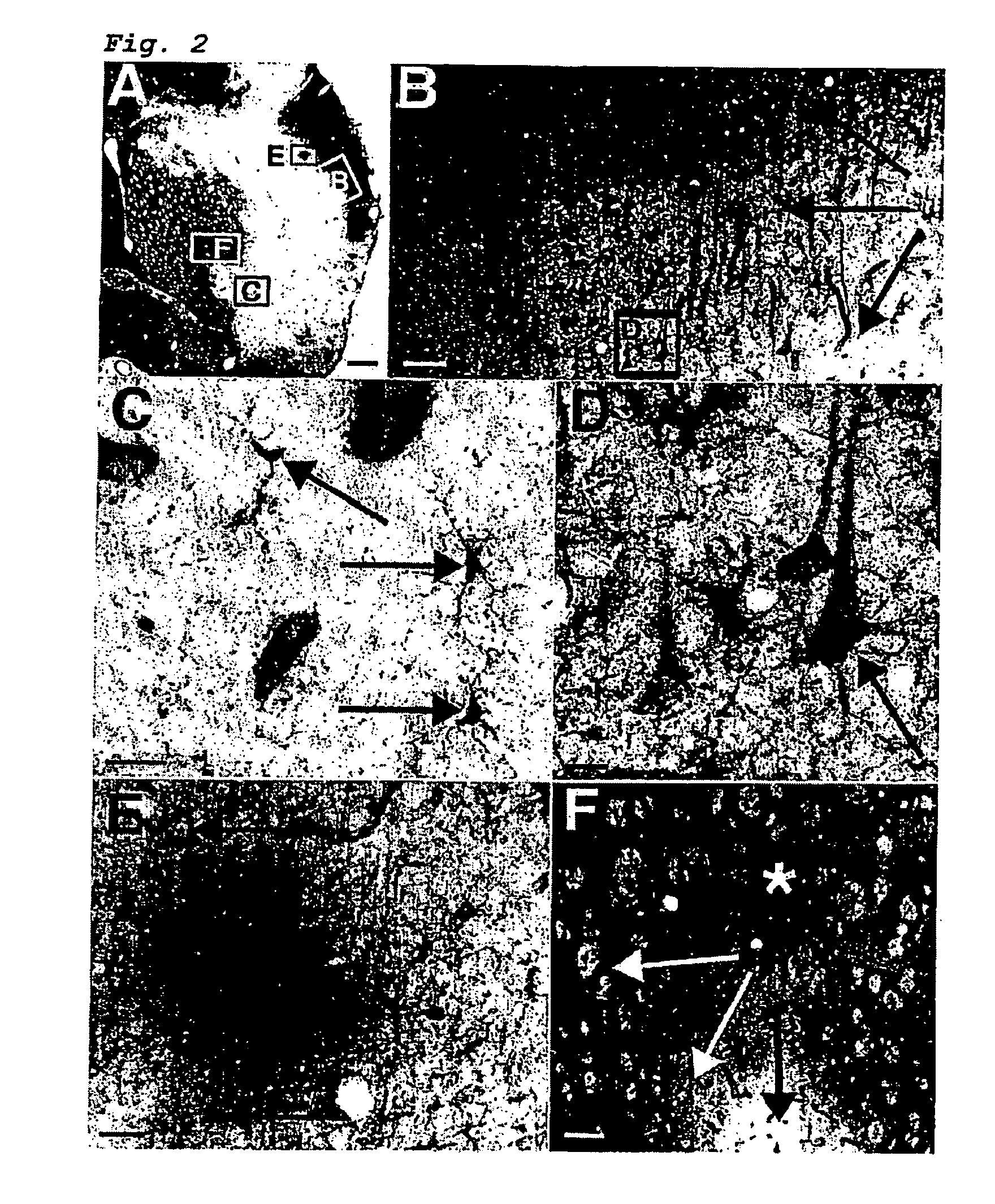Diagnostic substance and method for the analysis of metabolism processes in the brain
a metabolic process and diagnostic substance technology, applied in the field of diagnostic substance and method for the analysis of metabolic processes in the brain, can solve the problems of inability to transfer this method to humans, poor three-dimensional resolution obtained in these investigations, and inability to investigate by means of nmr spectroscopy
- Summary
- Abstract
- Description
- Claims
- Application Information
AI Technical Summary
Benefits of technology
Problems solved by technology
Method used
Image
Examples
example
[0055]The distribution of thallium-201 diethyldithiocarbamate (201Tl-DDC) in the brain of a rat after injection of a 201Tl-DDC solution is shown in FIGS. 1 and 2. Thallium is a potassium tracer and can detect changes in potassium metabolism, as occur, e.g., in brain infarcts, brain tumors, or degenerative diseases.
[0056]FIG. 1 is an overview of the thallium distribution after Tl-DDC injection in the brain of rat 15 minutes (hyperacute stage, A, B, C) and 7 days (D, E, F) after focal cerebral ischemia. Shown are frontal sections in the plane of the anterior commissure (A, D) and images of the same sections (B, E). The variation in optical density along the white lines in B and E is shown in C and E, respectively.
[0057]In the hyperacute stage, an infarct core can be seen (asterisk in A and B, arrow in C), which has a clearly reduced staining intensity but cannot be detected at this early time point with conventional techniques. This region is surrounded by a zone, in which the intensi...
PUM
 Login to View More
Login to View More Abstract
Description
Claims
Application Information
 Login to View More
Login to View More - R&D
- Intellectual Property
- Life Sciences
- Materials
- Tech Scout
- Unparalleled Data Quality
- Higher Quality Content
- 60% Fewer Hallucinations
Browse by: Latest US Patents, China's latest patents, Technical Efficacy Thesaurus, Application Domain, Technology Topic, Popular Technical Reports.
© 2025 PatSnap. All rights reserved.Legal|Privacy policy|Modern Slavery Act Transparency Statement|Sitemap|About US| Contact US: help@patsnap.com


